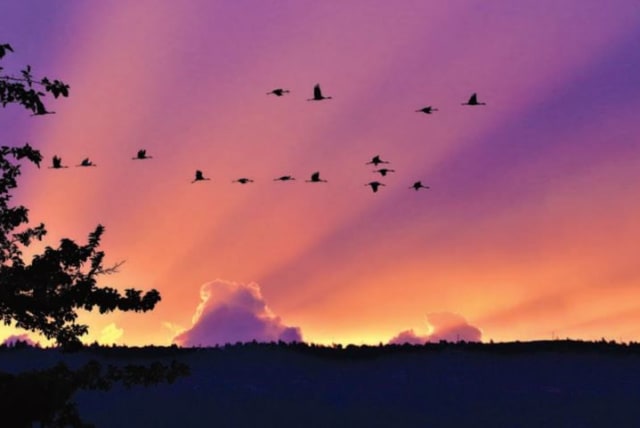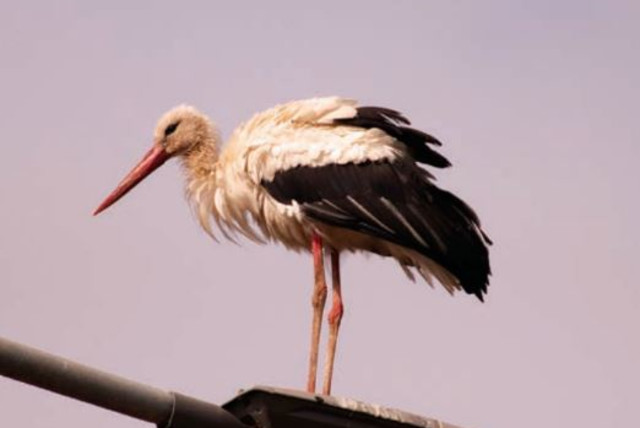Photography, poetry, and nature in Israel

Living so close to the lake and also to the beautiful countryside all around us has enabled me to get a close-up view of the nature of Israel.
When my wife and I left Manchester, UK, and immigrated to Israel, we had to decide where to live. We chose Tiberias in northern Israel and settled into an apartment overlooking the Kinneret (the Sea of Galilee), Israel’s largest lake. What an inspired choice that turned out to be for a nature photographer. We have wonderful views from our windows and porch of the Kinneret and the surrounding mountains including, on clear days, a view of Mount Hermon, snow-capped in winter. And we’re right on the bird migration route. Five hundred million birds travel through Israel twice a year. In the fall, they escape the cold winters of Northern Europe and head for the warmer climes of Southern Africa; and in the spring, they travel in the opposite direction to be in Europe for the summer. For many birds, it’s much safer to travel over land than over the sea, and Israel being a “land bridge” between Europe and Africa, is an obvious route. The birds more or less follow the Jordan River, and so the Hula and the Kinneret in the North, and Eilat in the South, are prime locations for birdwatchers.
Living so close to the lake and also to the beautiful countryside all around us has enabled me to get a close-up view of the nature of Israel. As well as photographing the flora and fauna, I’ve started blogging about what I see. You could almost say I’m a naturalist, which is not to be confused with a naturist. For most of the year, there’s so much to see; but sometimes it’s so hot in our region (well over 100 degrees F) that all the animals and birds hibernate (if you know what I mean), and I don’t see anything or anyone apart from mad dogs and other Englishmen. Because of days like this, I decided to have a go at writing some nature poetry. I’ve taken inspiration in doing this from a friend, a retired professor of philosophy, and also from a group of English-speaking poets in Israel, Voices Israel. You can check out the website https://voicesisrael.com/.
There are so many birds to write about, but in this article we will focus on just two – the glossy ibis and the stork. Once a week, my wife and I pick up our grandchildren from their kindergarten in Netanya. Our journey home, on Route 2, takes us northward along the coastal plain. During the summer months, we reach the Zichron Ya’akov junction during dusk, and more often than not we see hundreds of glossy ibis heading westward toward the nearby shoreline. I guess they’re heading for their ibis hotels to spend the night roosting. During the day, we observe them in fishponds near Zichron Ya’akov, where they sift the mud and shallow waters for worms and small crustaceans, their long down-curved beak being perfectly adapted for this sort of foraging. They are large black birds (with brown plumage during the mating season), related to herons, with a distinctive flying profile – long neck and beak to the front (where else?) and feet protruding behind (where else?). Thousands upon thousands travel through Israel on their biannual migration, but a significant number like it here so much that they’ve taken up permanent residence.
There is a legend that Moses used ibises during the war with the Ethiopians in the days before he fell out with Pharaoh and had to flee Egypt for his life. Moses led the Egyptian army overland toward Ethiopia, a route that the Ethiopians didn’t consider passable because of the multitude of venomous snakes. Moses used the ibises to kill off the snakes, thus allowing his army to pass unhindered and surprise the unprepared Ethiopians. This legend, or perhaps it is historically true, is recorded in the writings of the historian Josephus in his book The Antiquities of the Jews, written almost 2,000 years ago. Whether true or not, it is certainly true that Egyptians revered the ibis and one of their gods, Thoth, took the form of an ibis-headed man, which I’m sure would have frightened the Ethiopians considerably if they had seen such a sight.
In Israel ,we see two kinds of storks, particularly during the bird migration seasons: the black stork and the white stork, the white being far more common. We sometimes see them roosting on street lamps at the side of highways or even on electricity pylons, where they presumably stop to recharge their batteries.
In the Torah, we read about the kosher and non-kosher animals, fish, and birds (Leviticus Chapter 11). For the animals and fish, we’re told the signs to look for to determine if they’re kosher or not, but there isn’t a simple rule for birds. Indeed, 24 birds are listed in the Torah as not kosher, and we assume, therefore, that all other birds are kosher. The problem we have, though, is that we’re not sure which species are those that are listed as not kosher. We know the Hebrew words, but determining the exact species of bird is not simple. We do believe, though, that one of the non-kosher birds is the hasidah, the stork. The Talmud tells us that the hasidah is so called because it does kindness (it is a “hassid”) by sharing its food with its companions. This naming gives rise to a question.
Do storks really show kindness to others? It is difficult to know for sure, but recent research (published in the journal Current Biology in January 2020) has shown that African Grey Parrots are kind to each other. This will no doubt be troublesome to Darwin’s “Survival of the Fittest” model for evolution, but for us it gives reason to believe that if parrots can be kind to each other, so too can storks.
Here is a very short poem that I recently wrote:
Lunch
Waiting for lunch
By the lily pond
Admiring the lilies
Yellows and pinks
I watch the fish
I hear the frogs
A bright blue flash
A crash, a splash
Another blue flash
A white-throated kingfisher
Flew to its perch
Goldfish in mouth
The bird had its lunch
And I went for mine. ■
Jerusalem Post Store
`; document.getElementById("linkPremium").innerHTML = cont; var divWithLink = document.getElementById("premium-link"); if (divWithLink !== null && divWithLink !== 'undefined') { divWithLink.style.border = "solid 1px #cb0f3e"; divWithLink.style.textAlign = "center"; divWithLink.style.marginBottom = "15px"; divWithLink.style.marginTop = "15px"; divWithLink.style.width = "100%"; divWithLink.style.backgroundColor = "#122952"; divWithLink.style.color = "#ffffff"; divWithLink.style.lineHeight = "1.5"; } } (function (v, i) { });

